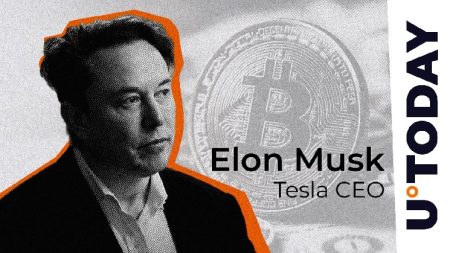Ethena Enters Competitive Race to Issue Hyperliquid’s USDH Stablecoin with BlackRock-Backed Proposal
Major DeFi Protocol Joins Growing List of Contenders in High-Stakes Stablecoin Competition
In a strategic move that underscores the growing competition in decentralized finance, Ethena has officially submitted a proposal to issue Hyperliquid’s upcoming USDH stablecoin. The Tuesday announcement places the protocol among a crowded field of established financial players, including Paxos, Sky (formerly MakerDAO), Frax, and Agora, all vying for a partnership with one of crypto’s fastest-growing trading platforms.
Ethena’s proposal centers on backing the new stablecoin entirely with its USDtb, a digital asset that represents a significant evolution in stablecoin infrastructure. USDtb is issued in partnership with federally chartered bank Anchorage Digital and is fully collateralized by BUIDL, the tokenized money market fund created through collaboration between asset management giant BlackRock and digital securities firm Securitize. This institutional pedigree gives Ethena’s proposal considerable weight, combining traditional finance stability with blockchain innovation.
“We are excited to enable Ethena’s USDtb, which is 100% backed by BUIDL and uniquely positioned to offer institutional grade cash management as well as on-chain liquidity to Hyperliquid users,” said Robert Mitchnick, BlackRock’s head of digital assets, in the proposal. This endorsement from one of traditional finance’s most influential figures signals growing institutional confidence in decentralized finance products, particularly those built with regulatory compliance in mind.
Revenue Sharing and Migration Support Highlight Competitive Offering
The competition for Hyperliquid’s stablecoin issuance has intensified for good reason. The decentralized exchange processed nearly $400 billion in perpetual contract trading volume last month alone, representing one of DeFi’s most active trading environments and an attractive market for any stablecoin provider looking to expand its footprint in the digital asset ecosystem.
To distinguish its offering, Ethena has included two significant commitments in its proposal. First, the protocol pledged that 95% of net revenue generated from USDH reserves would flow directly back to the Hyperliquid ecosystem, creating a powerful incentive for validators to select their proposal. Second, Ethena committed to covering all costs associated with migrating existing USDC trading pairs on Hyperliquid to USDH, removing a potential barrier to adoption and easing the transition for traders and liquidity providers.
The economic model presented by Ethena addresses key concerns for decentralized exchanges: sustainable revenue and seamless user experience. By offering a substantial revenue share and shouldering migration costs, Ethena demonstrates understanding of both Hyperliquid’s institutional needs and the practical requirements for mass adoption of a new stablecoin within an established trading environment.
Decision Approaches as Validators Prepare to Vote on Competing Proposals
The battle to issue Hyperliquid’s USDH stablecoin represents more than just another product launch in the crypto space. It highlights the strategic importance that major financial entities now place on establishing themselves within decentralized finance infrastructure. For Hyperliquid, selecting the right issuance partner will influence everything from trading volume and liquidity to regulatory positioning and institutional adoption.
Validators are scheduled to vote on the competing proposals on September 14, with Sky’s proposal also garnering significant attention. Sky’s offering features compliance with Project Genius standards, an $8 billion balance sheet, and an attractive 4.85% yield – setting up a compelling alternative to Ethena’s BlackRock-backed approach. Other contenders, including established stablecoin issuer Paxos and DeFi pioneer Frax, have presented their own unique value propositions, making the upcoming vote one of the most consequential governance decisions in recent DeFi history.
Stablecoin Landscape Evolves as Traditional and Decentralized Finance Converge
The competition surrounding USDH issuance reflects broader trends in the stablecoin market, where boundaries between traditional and decentralized finance continue to blur. BlackRock’s involvement through BUIDL demonstrates how major asset managers now view tokenized financial products as strategic priorities rather than experimental side projects. Similarly, federally chartered banks like Anchorage Digital are increasingly comfortable partnering with protocols like Ethena to create compliant on-chain financial instruments.
This convergence creates new opportunities for stablecoin innovation beyond simple dollar-pegged assets. USDtb’s structure as a fully-backed, institutionally-supported stablecoin represents an evolution from earlier models that relied primarily on cryptocurrency collateral or algorithmic mechanisms. By incorporating regulated money market funds and bank partnerships, newer stablecoins aim to address regulatory concerns while maintaining the transparency and accessibility benefits of blockchain technology.
Implications Extend Beyond Single Protocol as DeFi Matures
The outcome of Hyperliquid’s stablecoin selection process will have implications extending far beyond a single protocol. As decentralized finance continues to mature, the infrastructure choices made by major platforms increasingly influence the development trajectory of the entire ecosystem. Stablecoins serve as foundational building blocks for lending, trading, and payment applications, making their issuance partnerships strategically significant for all participants.
For traders and investors, the emergence of institutional-grade stablecoins backed by recognized financial entities offers greater confidence in the stability and compliance of decentralized financial products. For regulators, these partnerships demonstrate the industry’s willingness to operate within established frameworks while innovating on technological capabilities. And for traditional financial institutions, these collaborations provide entry points into decentralized finance without requiring wholesale abandonment of existing business models.
As the September 14 vote approaches, all eyes will be on Hyperliquid’s validator community to see which vision for USDH will prevail – Ethena’s BlackRock-backed approach, Sky’s high-yield offering, or one of the other competitive proposals. Whatever the outcome, the intense competition for this stablecoin issuance partnership demonstrates that the future of finance increasingly depends on successfully bridging traditional and decentralized systems, with stablecoins serving as critical connection points between these once-separate worlds.















